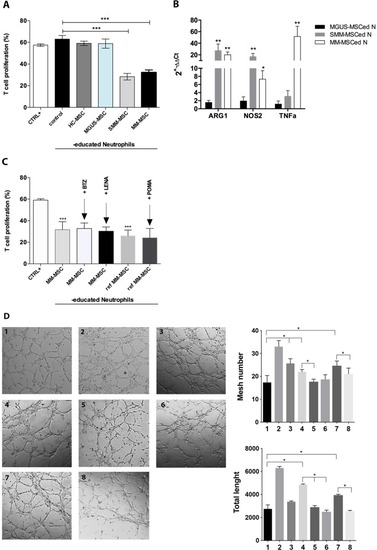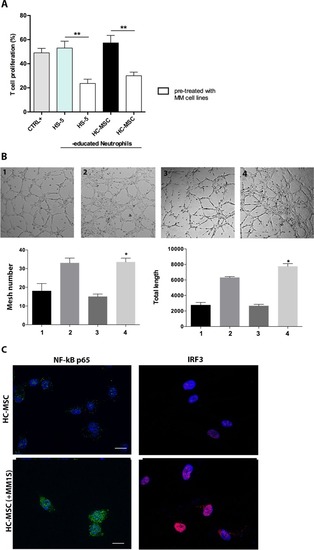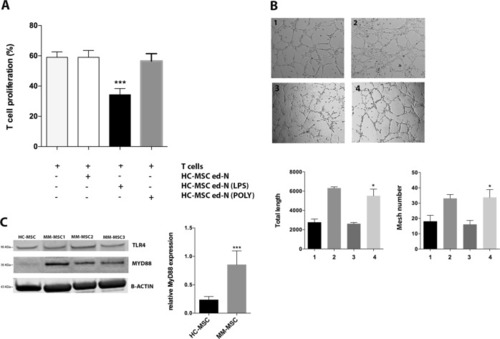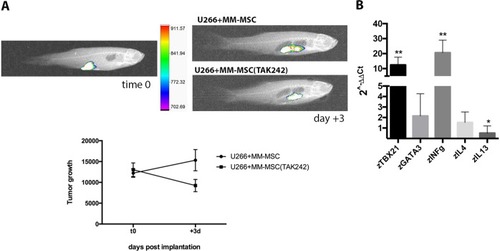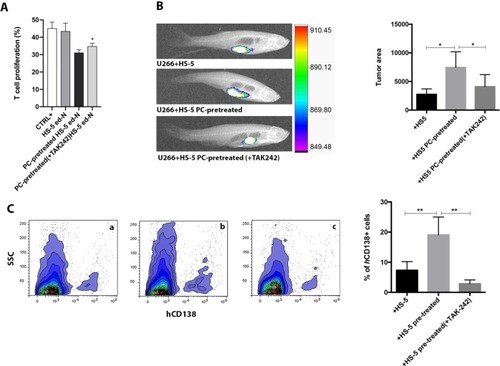- Title
-
TLR4 signaling drives mesenchymal stromal cells commitment to promote tumor microenvironment transformation in multiple myeloma
- Authors
- Giallongo, C., Tibullo, D., Camiolo, G., Parrinello, N.L., Romano, A., Puglisi, F., Barbato, A., Conticello, C., Lupo, G., Anfuso, C.D., Lazzarino, G., Li Volti, G., Palumbo, G.A., Di Raimono, F.
- Source
- Full text @ Cell Death Dis.
|
|
|
|
|
|
|
Three animals were engrafted for every combination of PC with SMM-MSC ( |
|
MM-MSC (from five patients) were pre-treated with TAK-242 before co-injection with PC. Three animals were engrafted for every group. |
|
|

